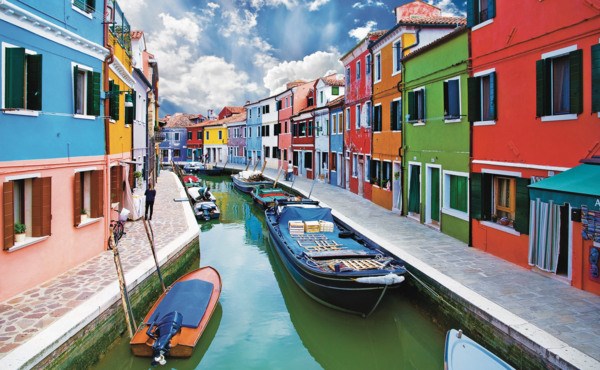
Italy Surround yourself with greatness.
Walking amongst Classical architecture mingled with Renaissance art, you'll explore the same beautiful cities that inspired Dante, Da Vinci, and even Shakespeare. While you're soaking in the rich history of Italy, dive into local culture as you learn to make pasta in Bologna, browse Milanese high-fashion, and sip golden wine on a Venetian Island.
Learn more about why a river cruise with Uniworld is the best way cruise.

Venice & the Jewels of Veneto
Venice to Venice | 8 days
This ultimate Venetian vacation is perfected by one unique quality: your stay onboard our floating boutique hotel. Not only will you benefit from an enviable location in Venice, you’ll also...
Ship: S.S. La Venezia
Country: Italy
4.6/5 (106 reviews)
From $1,999 per person

Milan, Venice & the Jewels of Veneto
Milan to Venice | 10 days
Begin your journey in stunning Milan and disembark in romantic Venice. These two legendary cities will bookend unforgettable experiences throughout the Veneto region.
This ultimate Venetian vacation...
Ship: S.S. La Venezia
Country: Italy
4.5/5 (90 reviews)
From $2,899 per person

Cruise & Rail: Milan, Venice, Istanbul & the Balkans
Milan to Istanbul | 19 days
Begin your journey in stunning Milan and embark on your cruise in romantic Venice. These two legendary cities will bookend unforgettable experiences throughout the Veneto region. Treat yourself to a...
Ship: S.S. La Venezia
Countries: Italy, Slovenia, Bosnia and Herzegovina, Croatia, Macedonia, Bulgaria, Turkey
From $20,394 per person

Cruise & Rail: Grand Alpine & the Jewels of Veneto
Budapest to Venice | 16 days
Begin your journey in the stunning cities of Budapest and Vienna, from which you’ll ascend into the idyllic wonderland of the Alps via a luxury overnight train. Your days will be filled with...
Ship: S.S. La Venezia
Countries: Hungary, Austria, Switzerland, Slovenia, Italy

Cruise & Rail: Venice, Istanbul & the Balkans
Venice to Istanbul | 17 days
Embark on a private train journey to Istanbul, during which you’ll sleep on the luxury Golden Eagle Danube Express with ever-changing views at your window—the perfect addition to a river...
Ship: S.S. La Venezia
Countries: Italy, Slovenia, Bosnia and Herzegovina, Croatia, Macedonia, Bulgaria, Turkey
From $19,494 per person

Rome, Venice & the Jewels of Veneto
Venice to Rome | 11 days
Begin your journey in romantic Venice. Treat yourself to a private evening lighting ceremony at St. Mark’s Basilica, explore the colorful facades of Burano, and sail south to discover...
Ship: S.S. La Venezia
Country: Italy
From $4,859 per person

Grande Italia
Milan to Rome | 13 days
Begin your journey in stunning Milan, where you’ll view da Vinci’s “The Last Supper.” Stop for a tasting of rare Amarone wines on your way to romantic Venice. Embark on your...
Ship: S.S. La Venezia
Country: Italy
From $5,669 per person